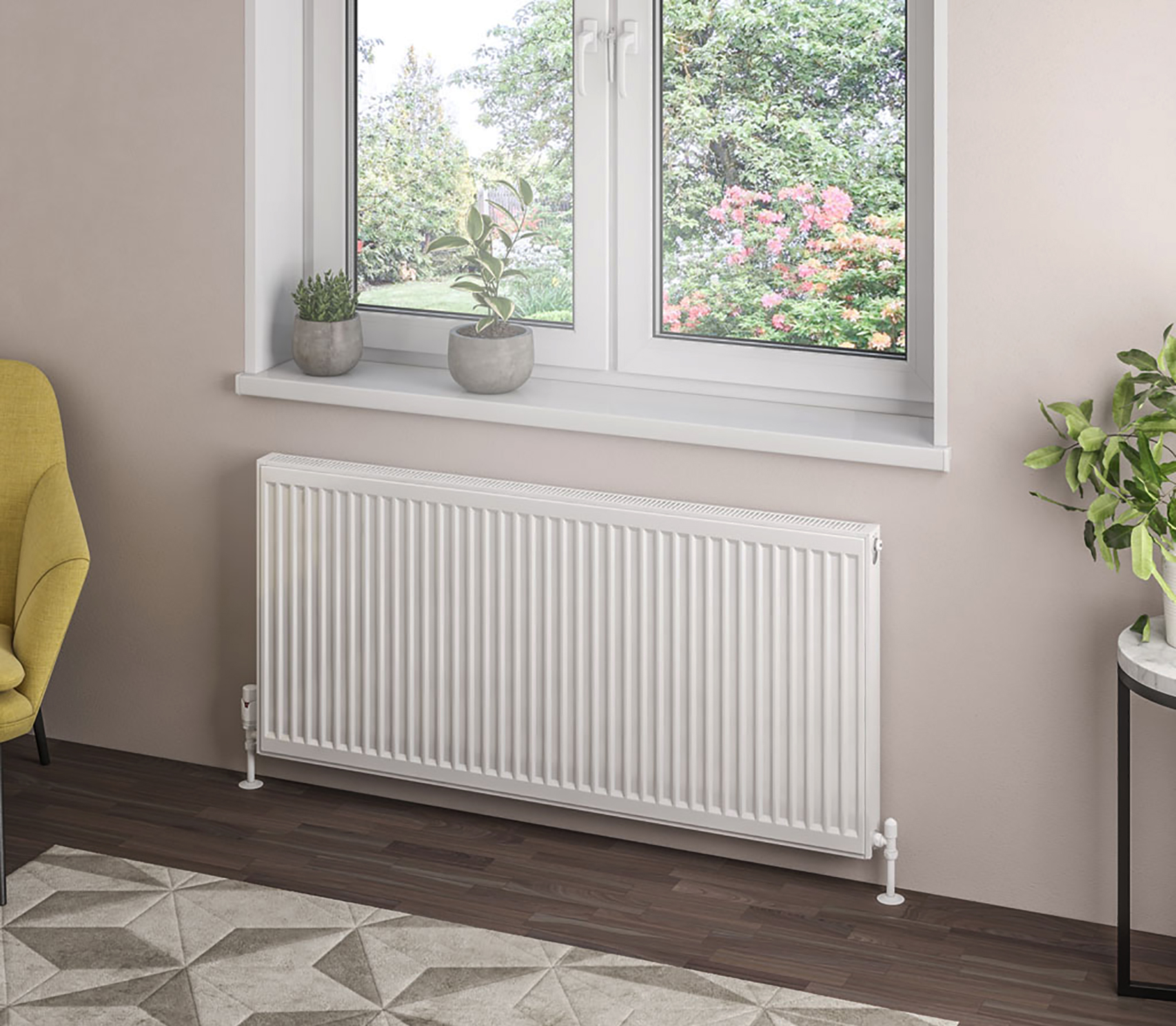Avoid condensation and mould in your home
It might seem counter intuitive, but don't dry clothes on heated radiators and be sure to open windows even in winter if you want to avoid condensation and worse still, mould

A radiator should NOT be laden with wet washing in winter, it's bad for your indoor air quality and can lead to too much condensation in an enclosed space.
The winter months are fast approaching, and with the increasingly wet weather, it's temping to use warm radiators to dry your washing.
But Nancy Emery from Only Radiators says this isn't a good idea: 'It might be a quick fix but using radiators to dry wet clothes causes a number of issues, some of which bad for our health.
'Drying clothes on radiators leads to higher amounts of condensation due to the lack of airflow from having your radiators covered, which leaves moisture lingering in your rooms - and that’s when the issues start to arise.'
Dangers of drying your clothes on the radiator
Breeding ground for mould
Drying clothes indoors releases moisture into the air and the amount of water in wet clothes can be equal to litres, so once that water evaporates, it has to go somewhere. All of that water will then ride along an air current until it sticks to the first cold surface it meets, creating the perfect environment for mould to grow.
Can cause flu-like symptoms
Mould can do more than just look awful in your home, if left untreated it can be harmful to your health.The effects of mould can cause you to sneeze more often, along with coughing and an increased likelihood of a sore throat. You may also experience a runny nose, irritated skin and red eyes. And worryingly, for those feeling particularly tired with developing flu-like symptoms, it’s possible that they could have mould-induced ASPERGILLOSIS hiding inside their respiratory system and not even know.
Can make medical conditions worse
The condensation created by drying your clothes on the radiator, which leads to mould, can also harm your respiratory system. It mainly affects people with pre-existing conditions such as asthma due to mould-producing allergens, irritants and toxic substances.
How to prevent condensation
Ventilation is essential in every room with high amounts of moisture to reduce the risk of mould forming. Typically, we tend to install dedicated ventilation in bathrooms, kitchens, and any utility or laundry rooms, but if you have limited space to dry your clothes, it’s essential to ensure you can ventilate your chosen ‘drying’ room in some way.
Open your windows
You don't have to have your windows wide open in the middle of winter to create some ventilation; many windows can be locked in a position where a thin crack can allow some necessary airflow. The window itself will still be locked, but moisture and dust can escape, and fresh air can filter into your home. There's nothing worse than a stuffy home, but windows are also your first line of defence against condensation and mould. So, if you must dry your jeans on your radiator, then make sure the radiator is under an open window. Which doesn't make financial or eco sense....
Clean your extractor fan
Well-maintained and cleaned extractor fans will ventilate a room very effectively. An extractor brings fresh air from outside into an enclosed space, it works like a window to aid circulation. Often found in kitchens and bathrooms, ventilators can be fitted in any room with the help of a professional.
Invest in a heated towel rail
A heated towel rail, paired with proper ventilation, is a perfect way to avoid mildew-smelling clothes, asthma risk, and black mould. Plus, they created the added bonus of warm towels whenever you want them, perfect for the colder months.
Consider purchasing a dehumidifier
A dehumidifier is an excellent way to remove water from the air in your home. This prevents the condensation from settling on cold surfaces, ultimately stopping mould from appearing. It can also help reduce other factors, such as the amount of dust particles in the air aiding your breathing. They don't all cost the earth but good quality ones obviously cost more. Prices start at around £30 but expect to pay £200 or so for a good one.